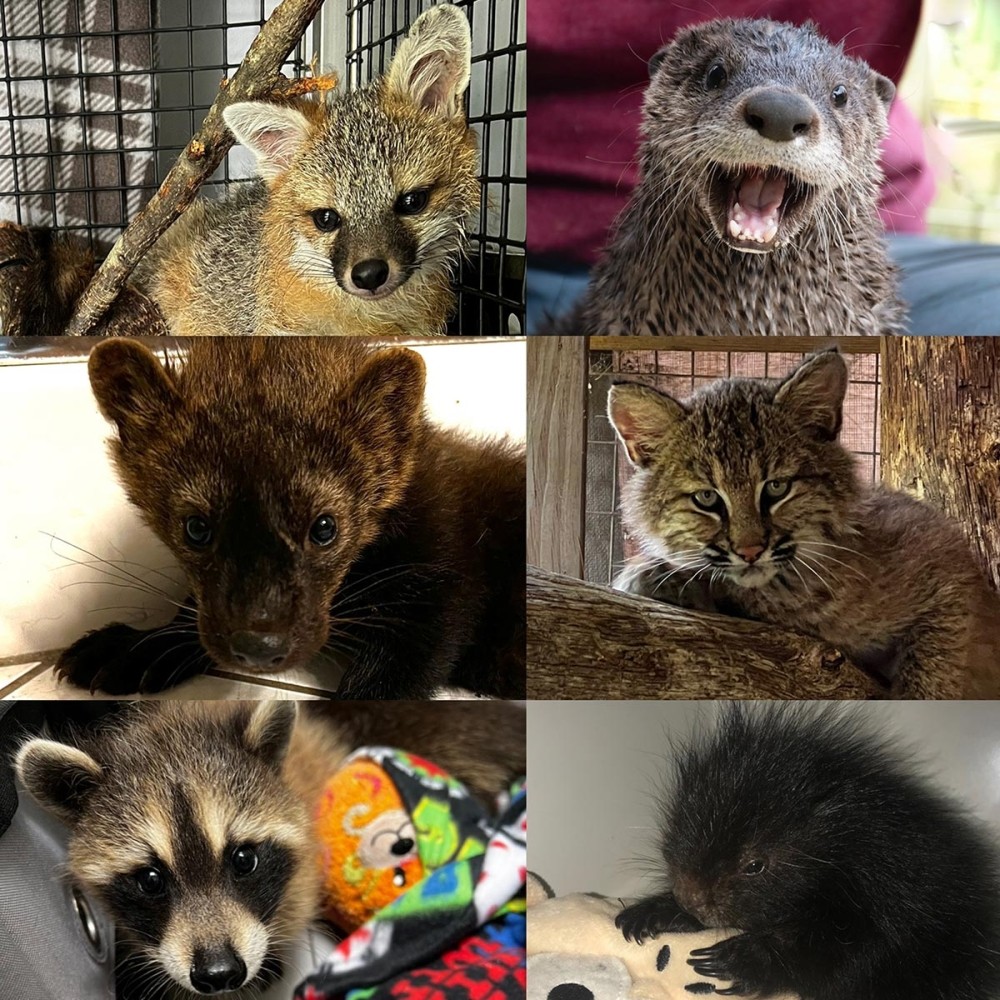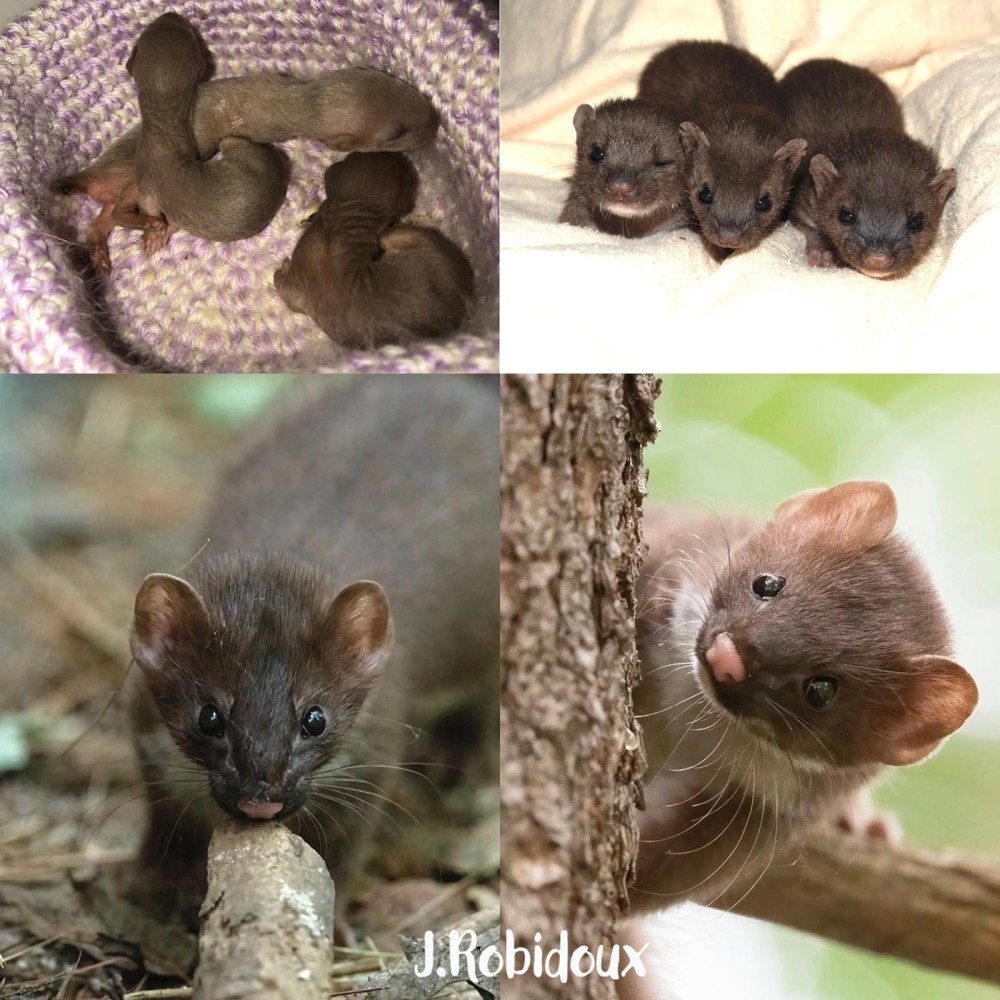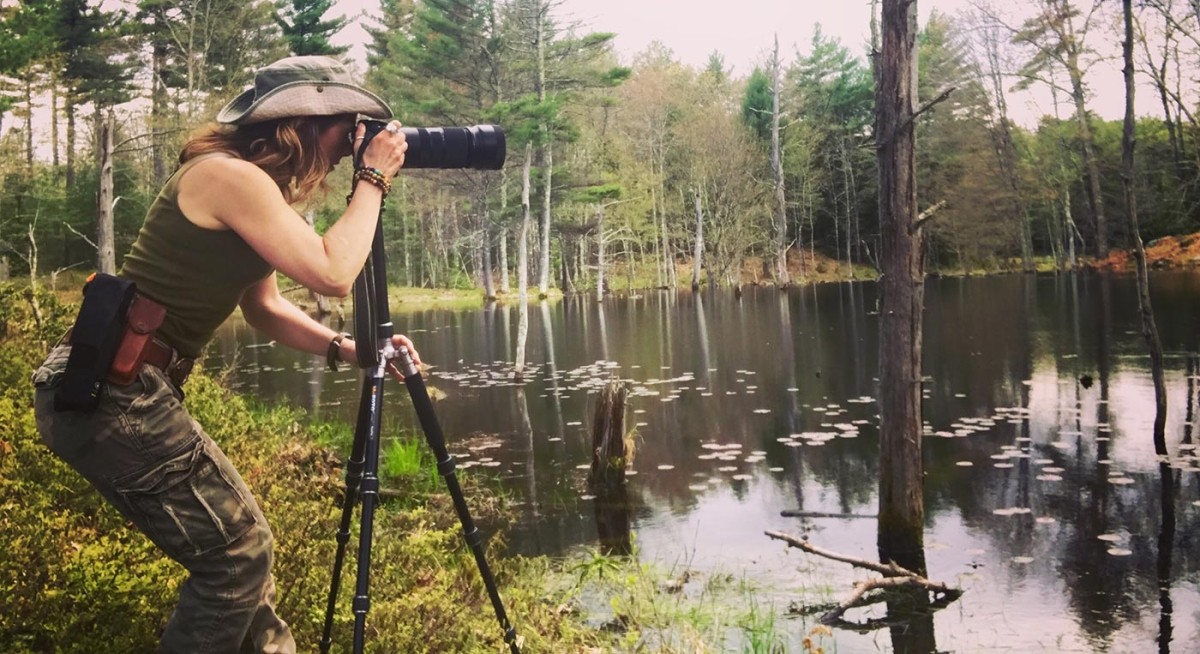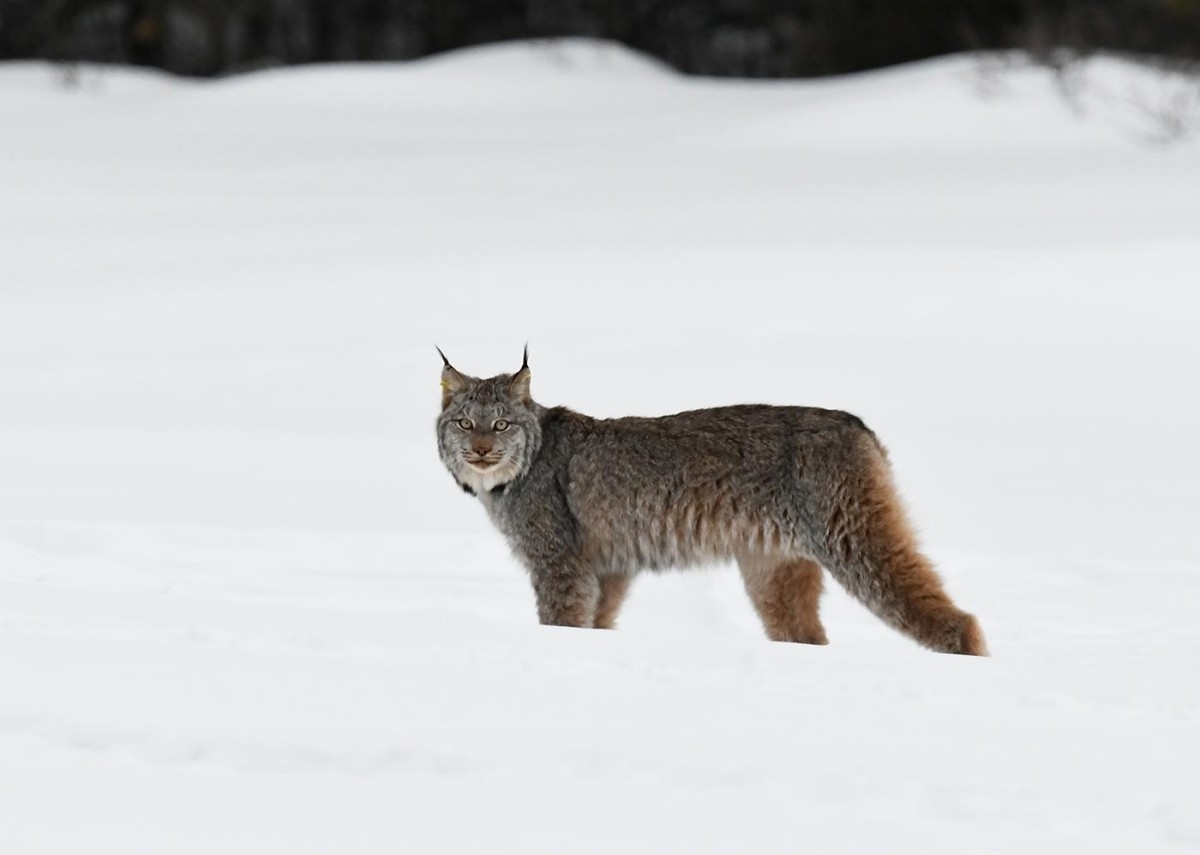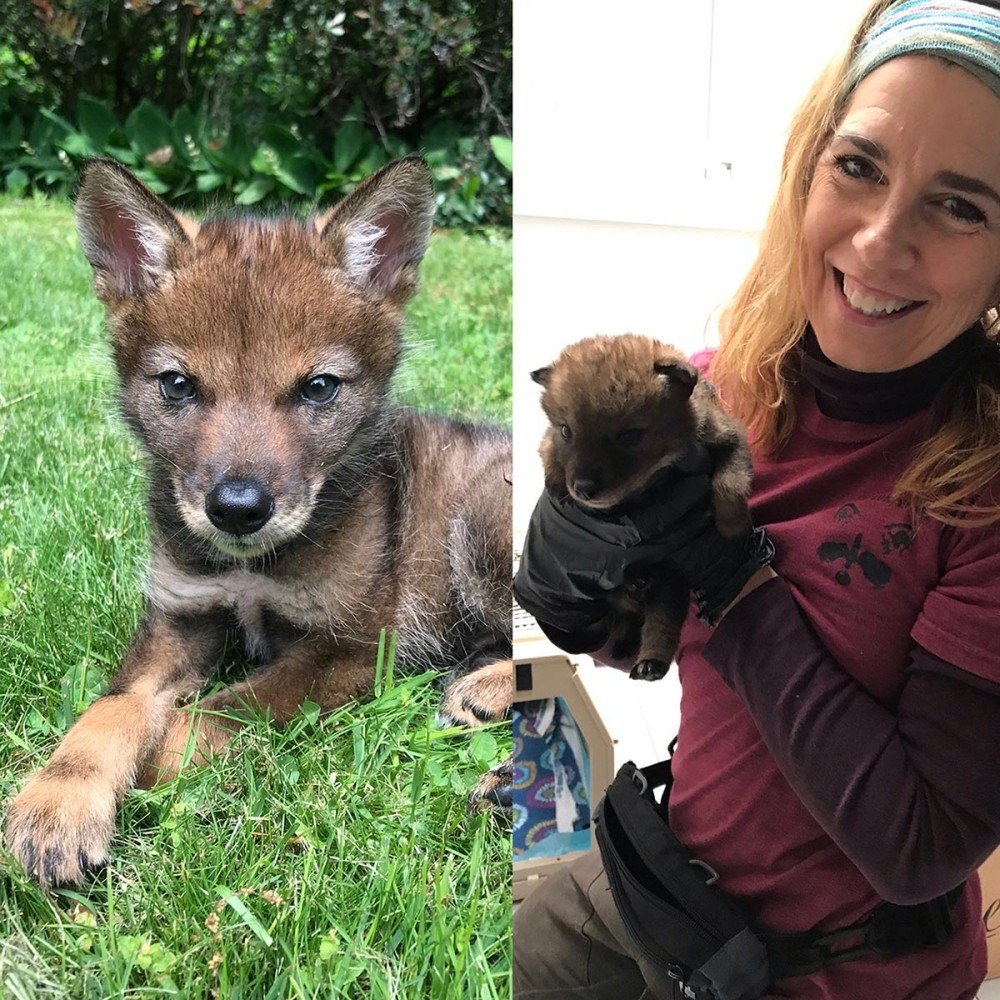
When Jackie Robidoux retired recently from a career in nursing, she turned her attention from taking care of people to taking care of animals. She’s long enjoyed photographing wildlife and natural scenes, and in early 2021 she began volunteering for the Millstone Wildlife Center, a wildlife rehabilitation outfit in Windham, New Hampshire. Now, in both her volunteer work and in her photography, Jackie’s main goal is to educate others about the importance of wildlife and habitat conservation.
I grew up on a small lake in Johnston, Rhode Island, and I pretty much was outdoors and barefoot from Memorial Day to Labor Day. I was catching fish, snorkeling around the lily pads, catching frogs and snakes, climbing trees. I was rarely indoors as a kid, and I’m grateful for that. Every morning in the summer I’d go out fishing or take the boat out or go kayaking and just enjoy the outdoors for hours on end. My grandmother had a huge garden with a frog pond, and I’d sit there for hours catching frogs and watching the butterflies and insects. My love for nature started really young.
I’ve always loved animals. My boys and I used to volunteer at Massabesic Audubon Center. We’d feed the turtles and snakes and amphibians they had and monitor the bluebirds at the center. I had always wanted to do rehab and take care of animals, so when I retired from nursing, I looked for local rehabbers. I was so blessed to find Frannie Greenberg at Millstone Wildlife Center. She is incredible. She took me under her wing, and I just fell in love with her and with her mission.
We rehab orphaned and injured wildlife. Our main goal is to release them back into the wild. Unfortunately, some of them can’t go back, and we have them as ambassador animals. We take those animals out to do educational programs for schools and other events to teach people about wildlife rehabilitation and conservation. We have Petunia, a 3-year-old opossum. She’s very sweet. We have Phoenix, a corn snake, so she’s not native to New Hampshire. And we have a box turtle named Buck. We bring those three animals to our educational programs. And I also show pictures of all the other animals we have at the center.
I was a nurse for more than 30 years. I started out in oncology, then I did orthopedics, then medical-surgical. Most recently, I had my own holistic nursing practice at the New Hampshire Health and Wellness Center. I utilized energy work – Reiki, craniosacral, aroma therapy, body work. Working in animal rehab is such a normal progression of what I did as a nurse. It’s a 24/7 job to care for these animals, and I’m just one volunteer in an incredible team of volunteers. It’s really been a beautiful transition, and I feel so grateful to be able to care for these little animals and send them back into the wild, where they belong.
I am a licensed rehabber. Every state is different in how they license animal rehabilitators. In New Hampshire you need 200 hours of volunteer work under a licensed rehabilitator. There are various things you have to have done – wound care, admission, feeding, that type of thing. It’s kind of like an internship. A rehab center also needs what they call a “vet of record,” so a veterinarian willing to work with the rehabber. Unfortunately, we can’t do everything. We don’t have an x-ray machine. We can’t give certain types of medications. We need a veterinarian for those things. Our vet of record is Tim Feltz in Manchester, with Caring Hands Animal Hospital, and he is incredible.
We work mostly with small mammals. Right now, we have some really cool animals. We have a bobcat, an otter, and a fisher that we’re rehabbing. We do squirrels, rabbits, raccoons, fox, coyote, opossum, skunk, woodchuck – you name it, any type of small mammal. We had three baby weasels over the summer. They were tiny when they came to us, and they were so fun to take care of. They were so feisty, even with their eyes not open yet. They’ve been released now. As soon as we put them outside, they wanted nothing to do with us.
You fall in love with all of them – for me, especially porcupines. Porcupines have the most amazing personalities. They’re all different, and they’re so funny. This year we had a porcupine that was still attached to the mom’s placenta. The mom had been hit by a car and died, and we didn’t know if the baby was going to make it. His name is Prickles. He is doing great. We had to hold him and bottle feed him, which is great when they’re babies, but they nurse until four months old. This little guy would crawl out of the cage, sit on your lap, and be fed. You had to be careful! Now he’s outside with the rest of the older porcupines, and he couldn’t care less about humans. They adapt. They eat normally. They’ll all be released in the fall, and they’ll take off.
If we rescue animals when they’re babies, we have to bottle feed them. That’s the way it goes. It’s really important that as soon as they’re weaned, we have the least amount of contact with them as possible. As soon as they’re weaned, they’re in an enclosure outside in their natural habitat, and we just go in to feed them, then we leave. Every species is different as far as what age they are when they’re weaned and when they’re ready to be released. The quickest wean is rabbits. They’re weaned at four weeks. We get a lot of people who call concerned about baby rabbits they see in their yards. If it’s as big as a tennis ball or bigger and its ears are up and it’s hopping, it’s fine.
These animals have this incredible instinctual DNA, and they take off when we release them. We work with farmers, private landowners, Audubon centers, conservation groups to have places to release these animals. We do try to release them around where they were found, but if we can’t, we release them in a habitat that is sustainable for that species.
There was one animal that changed my whole trajectory as a nature photographer. This past May, we received a mother coyote and a pup that were hit by a car. We successfully rehabbed the mom and released her. But the female pup had a spinal cord injury and couldn’t be released right away, so we cared for her for a few weeks. She ended up passing away. Her name was Fremont – because that’s where she was found, in Fremont, New Hampshire – and when she looked at me, it was this aha moment. She looked at me, and it was a message.
I’ve been taking photos for 20 years. I’ve been doing workshops on wildlife photography and trail cameras, tracking, mindfulness in nature. When out in the field, I was always trying to get that perfect shot of an animal or scenery. My focus now is on creating images that bring awareness to the importance of wildlife and environmental conservation. We need to peacefully coexist with our wild neighbors; they were here first.
Probably around 1999, I purchased my first camera. It was a film camera. What really prompted me to start taking wildlife photographs was when I looked through a pair of binoculars and saw this gorgeous goldfinch. I wanted to capture that image. That’s when I went out and bought my camera. Ever since, I’ve been taking photographs of nature and wildlife. Then about 10 years ago, I started offering wildlife photography programs.
I’m also a trail camera junkie. My sons got me a trail camera for my birthday about eight years ago. Now I have 20. I started using them just for fun. Then I realized you can learn so much about wildlife from these trail cameras, because you get such incredible footage of behavior. I had one on a fox den, and I got all this amazing footage of these pups and mom. We had a camp up in Moosehead Lake in Maine for many years, and I captured moose, lynx, fisher on trail cams there. My friend and I have one now set up on some private property monitoring a bobcat den. And I can use this footage as an educational tool, because it allows us to see this behavior that you wouldn’t normally see.
I’ve done programs about utilizing trail cameras, wildlife tracking, wildlife photography, mindfulness in the field. That’s where my nursing has kind of overlapped. In my work as a holistic nurse, I would always recommend to my clients getting out in nature, being mindful in nature, do your deep breathing outdoors. It has been a natural progression, moving from doing that with my clients to now teaching it at workshops and helping people connect with nature. I’ve done programs at Massabesic Audubon Center, Newfound Center, and Beaver Brook Association.
I love wildlife tracking. I cannot wait for the first snowfall. I’ll put my snowshoes on, and I’ll be gone for hours following the stories in the snow. It fills my soul. I’ve studied with Sue Morse of Keeping Track and taken a lot of her workshops. She’s incredible. I’ve taken workshops with Paul Rezendes, and he’s incredible. Any workshop I can take, I take. I’m also part of the Northeast Wildlife Trackers, and I’ve presented at their conference a couple of times.
One of my favorite tracking outings was in Maine, tracking lynx. I was with a group led by Dan Gardoqui. We came across lynx scat and a lynx scrape. That was really, really interesting. Another time, my girlfriend and I went to the Algonquin park in Ontario and we tracked wolves. We didn’t see a wolf, but just seeing their tracks – that was one of the most memorable tracking experiences. We backtracked a pair, and just knowing they were there, in this beautiful wilderness, crossing lakes, going over ponds. That was pretty amazing. I feel so blessed to be in the presence of these animals. And I always look for the message.
I feel connected with nature on so many levels now, not just the visual, but also the energetic piece of it. Noticing the little things now, I enjoy that so much. Listening to the birds or the wind – just enjoying nature in its raw beauty and the peace and quiet and the calm it gives me. Being out there is like my therapy. I feel that deep connection with mother nature. It helps me throughout my day.


